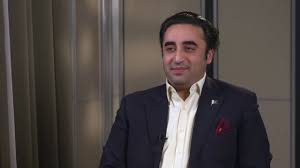As Italy continue to improve, so does everyone else

Rome: Italy are uniquely positioned in international rugby, although not in a good way. They’re sitting at the top table, but they’re still eating scraps.
Ever since they entered the expanded Six Nations back in 2000, they’ve been stuck in that nowhere zone; a considerable distance off the pace of their opponents, while being far too good for the better sides in the Rugby Europe Championship.
Year on year, as they rack up wooden spoons (16 out of 22) and see defeats pile up (34 in a row and counting), the same question is asked of tournament organisers: When will we see promotion and relegation?
As it always is, it was asked of Six Nations CEO Ben Morel at this year’s launch, and you could have written his answer before he even spoke.
“No. It’s not on the current agenda. But we understand there needs to be a pathway for emerging nations to elite rugby,” he said, somewhat predictably.
The answer is predictable because of the protection Italy have, which was only highlighted by last week’s kite-flying mission that they could be replaced by South Africa in the coming years, a report dismissed by organisers last Friday.
Given the cosy relationships between the six national unions, it’s highly unlikely for Italy to be turfed out, and so the conversation moves on. What can they do to improve, and when can they do it by?
There have been corners turned in the past, such as 2003 and 2004 when they picked up wins and avoided the wooden spoon, or their run from 2011 to 2013 when they beat France twice as well as Ireland, finishing fourth in the championship under the coaching of Jacques Brunel.
But their rise has always coincided with someone else’s fall, and once France and Scotland began to gather themselves in recent seasons, Italy have slumped to a historically bad run.
Coming Sunday’s meeting with Ireland at the Aviva Stadium, the losing sequence in the Six Nations is 34 games dating back to their 2015 win against Scotland at Murrayfield.
In all Tests since then, they’ve managed 12 wins in total. While the standout was their historic win against South Africa in Florence in 2016, the rest of the list is far from inspiring with three of those wins against Canada, and one each versus Fiji, Georgia, Romania, Namibia, Uruguay, Russia, USA and Japan. They don’t tend to do surprises, beating the teams they’re expected to beat, and losing the games they’re expected to lose.
In a country of 57 million people, they’re still picking from a relatively small pool, with multiple sources suggesting rugby ranks around 15th in terms of popularity, with the bulk of the Italian ‘rugby country’ in the north, far away from where they play their home games in Rome.
“Geographically, from Lombardy upwards, the interest in rugby is huge, there are a lot of magazines and newspapers and podcasts that talk about rugby day in and day out,” former Italy scrum-half Paul Griffen told RTÉ Sport this week.
“The further you go south it gets talked about less and less. “Treviso is in the Veneto area, if you talk about rugby there they know a hell of a lot about it.”
New Zealand-born Griffen moved to Italy in the late 1990s before qualifying to play for the Azzurri in 2004.
He’s still based in Italy to this day, working as a pundit with United Rugby Championship broadcasters Mediaset, while he has also previously been a coach in the Italian rugby federation, working with underage players.
If Italy are to make strides in Test rugby, it has to start with their URC franchises Zebre Parma and Benetton Treviso, according to both Griffen and former Zebre head coach Michael Bradley.
“If you have competitive teams in the Champions Cup then that’s close enough to international competition, and the players that play in those matches should be able to make the step up to international rugby and the pressures that are involved in that,” said Bradley on this week’s RTÉ Rugby podcast.
“The measure of where Italy are is relative in my opinion to where they are in the Champions Cup pecking order. How many matches do they play? What experience do they players get at that level to enable them to play at international level? With the South Africans coming in next year, it’s a more difficult task.”
You wouldn’t hang your hat on the Italian clubs bridging that gap, however. While Benetton have been competitive in recent seasons through winning the Rainbow Cup and reaching a Pro14 quarter final in 2019, Zebre have rarely made their presence felt.
“Comparing Paolo Garbisi at Montpellier, he’s got six big South Africans and a couple of big Frenchmen in front of him, so he can attack the line and make offloads. In the first two weeks, it hasn’t been his fault, but he hasn’t attacked the line because he hasn’t had a front-foot ball.”
The well-traveled Bradley was appointed as head coach in 2017, before being dismissed last month with the club winless so far in the URC. Despite being under the control of the FIR (Italian rugby federation) for several years, they have never been able to make the country’s second franchise work, with Zebre having replaced Aironi in the Celtic League from 2012.
Financially, it’s hard to see how they can compete. The former Ireland international reckons Zebre are working off a budget of around €5m per year, which covers the playing squad and management, both on-field and off.
“Treviso might have another two million on top of that,” Bradley adds. “Munster brought in the two boys from South Africa [RG Snyman and Damian De Allende], it probably cost them a million a year, and Treviso and Zebre have to play Munster.”
While Zebre have no independence from the FIR financially, Bradley says the union were largely hands-off when it came to coaching.
“It manifests itself everywhere, total control on the budget, but it doesn’t manifest itself on style of play.
“When I went in we agreed the style of play, and I said that Italy don’t have dominant, ball-carrying forwards, so we needed to expand how we played the game, and develop the skills, and that’s what we tried to do for four years.
“Teams cop on to it and set up their defences accordingly.
“They wouldn’t interfere with the technical work of the coaching staff, but they put in the coaches. Some of the coaches are excellent and some of the coaches need more development,” Bradley said.
“You have a situation where U20 rugby is good but a lot of it is grunt-and-groan, they beat England a couple of weeks back, but when you get down to the finesse and finishing touches, you need to work on the refined skills, and that skill level from a young age.”
Griffen sees a similar issue when it comes to the national team. While Bradley felt the need to move away from a confrontational, forwards-based approach, the current Italy side still seem tied to that style of play.
“At the moment, there is no clarity in what’s going on,” the 42-cap Italy international said.
“I think a big thing in Italian rugby at the moment is that we’ve tried to be powerful, but the dynamic side has been lost. With all respect to what’s fed me for the last seven or eight years coaching with the Italian rugby union, do we have potent ball carriers? No, we don’t.
“They don’t make a difference where we can put stress on defences, and create multi-phase play where people like Paolo Garbisi or Marco Zanon can make inroads and have a decent crack. When they touch the ball they have to kick it or they’re under a massive amount of pressure.
“Comparing Paolo Garbisi at Montpellier, he’s got six big South Africans and a couple of big Frenchmen in front of him, so he can attack the line and make offloads. In the first two weeks, it hasn’t been his fault, but he hasn’t attacked the line because he hasn’t had a front-foot ball.”
If there is something or someone Italy can build around, it’s the 21-year-old out-half Garbisi.
The Montpellier star is the leader of a core of young talent in Kieran Crowley’s squad, while the signs are that there are further prospects coming around the corner. In contrast to the results of their men’s team, their U20 crop appear to be getting better year-on-year, with this year’s bunch defeating England in Round 2, as well as seeing off Ireland in a warm-up game before Christmas.
Griffen cites a number of players in the current senior squad as being proof of the work being done in the national academy, mentioning Garbisi alongside the likes of Federico Mori, the Cannone brothers, Michele Lamaro, Gianmarco Lucchesi and Danilo Fischetti.
While their national academy system did appear to be making up some ground that had been lost in the previous decade, it’s now been scrapped, with more power – or responsibility – being placed on the club scene to nurture talent, following a decision made by the new FIR president Marzio Innocenti.
The main reason Italy are closing the gap in age-grade rugby though is that their players can physically match those in any other country, a parity that eventually gets lost.
“They will not change unless questions are asked, end of story. If it becomes a crisis, with South Africa coming in, they’ll try to move some things but it’s too late then. The questions have to be asked and the Italian union isn’t going to ask the questions, they have to be asked from the outside.
“The difference is if you get to a situation where you are two-on-one, or three-on-two, or draw and pass, and need to execute the little things like other teams in the northern or southern hemisphere learn at school” said Griffen.
“You have a situation where U20 rugby is good but a lot of it is grunt-and-groan, they beat England a couple of weeks back, but when you get down to the finesse and finishing touches, you need to work on the refined skills, and that skill level from a young age.
“That’s why we compete a lot at the underage stuff because we can physically match it.”
It’s a fear that the former Zebre coach Bradley shares, believing the resources at the disposal of Italy’s Six Nations rivals means their players cannot continue to grow as they move past age-grade rugby.
“They are talented, they are as talented as the Irish, they’re as talented as the Welsh,” said Bradley. “They beat England last time out.
“But what happens after the U20 is what we’ve been talking about, you need to continuously learn at a very high level.
“If, when they come into the franchises, Zebre and Treviso are operating at the level they’re operating now, relative to the competition in the Six Nations, then they don’t learn at the right level for them to be competitive in the Six Nations. That’s basically the conundrum.”
Outside of their two URC franchises, the next best of Italian club rugby is in their Top10 competition, essentially a semi-pro league, which currently can’t prepare players for elite rugby, as Griffen explains.
“The level of rugby below the two franchises is very, very low. The difference is when those guys come in, you’re basically like lambs to the slaughter.”
Talk of a revamped Six Nations, or an expansion to include South Africa or even Georgia may just be the kick up the backside that those running the game in Italy need.
“It’s in their culture that they’re good in a crisis,” said Bradley, adding that the longer their losing run continues, the money men of CVC might feel the need to start exerting some pressure.
“They will not change unless questions are asked, end of story. If it becomes a crisis, with South Africa coming in, they’ll try to move some things but it’s too late then. The questions have to be asked and the Italian union isn’t going to ask the questions, they have to be asked from the outside.
“If you just give someone €20m and say ‘do your best and be competitive in five matches’, they’ll take the €20m and say ‘thanks very much’.”
However, having worked in both Georgia and Romania in recent years, he says those countries remain “miles away” from Italy’s level when it comes to Test rugby.
Italy’s last Six Nations win came in 2015 when they beat Scotland 22-19 at Murrayfield
It just further emphasises that lonely middle ground Italy find themselves, particularly in Europe. The sixth best team, isolated from five and seven.
“It’s an exciting time, it’s a frustrating time,” Griffen appropriately sums up, citing Japan as the example for Italy to follow in the long term.
“I honestly think the time will come. It won’t be this year, or it won’t be next year. In 2024 and onwards, we’ll have a very competitive team.
“Whether we’re in the Six Nations or not is another kettle of fish.
“I honestly think things are improving. But the gap, unfortunately, isn’t closing.” And that, ultimately, sums it up.





